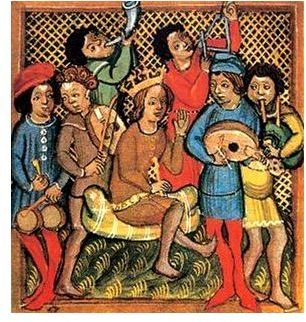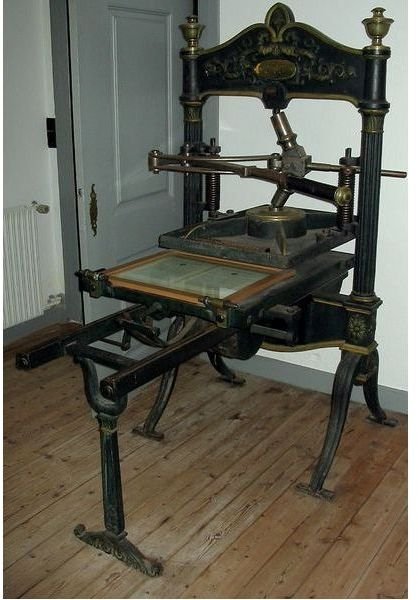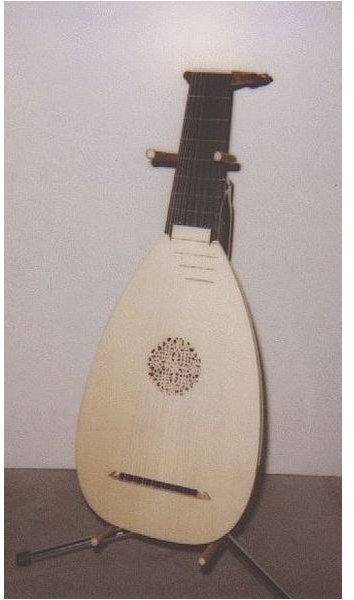The Evolution of Music in Europe: From the Middle Ages Through the Renaissance
Medieval Church Music
Music during the Middle Ages was often only heard in the Roman Catholic Church. In most instances, it was the church that provided any sort of education one could recieve, and supplied musical training as well. For most of the Middle Ages, the church relied on using vocals for music with examples ranging from choirs of boys to nuns in convents. It wasn’t until the 1100s that the accompaniment of instruments became a regular part of church music.
Probably the most famous instrument to arrive in the medieval period was the church organ. This was a controversial instrument due to its evolution. At first, the church organ was played with the organist’s fists and many church officials often complained about its loud nature that could distract a church service. Over time, however, the organ became easier to play and it could also produce more polyphonic music. Even with this innovation, church officials still thought it was too noisy even if a composer wanted to arrange a more instrumental piece.
Gregorian Chants
The most popular musical style in the Roman Catholic Church was the Gregorian chant, named after Pope Gregory I who reigned from 590-604. A Gregorian chant was often sung in Latin without the accompaniment of musical instruments. Gregorian chants were sung to enhance a particular part of a church service without an official melody or beat.
It is not surprising that several thousands of Gregorian chants were thought to be composed; however they were not recorded until about the 9th century. Composers before this recording are often lost due to the oral nature of Gregorian chants. For their mystery, Gregorian chants are often narrow in pitches yet still evoke a church’s personal identity.
Emergence of Modes and Polyphony
The introduction of church modes (or just modes) started the first push of innovation in music. Church modes consisted of eight different tones at half and whole steps. It is to be noted that these medieval modes are different from the major and minor scales today because they were arranged differently. Even with this difference, modes would end up influencing the basic scales of Renaissance music.
Another innovation was the introduction of polyphonic music. For the most part, medieval music was monophonic (which meant it only followed one melodic line), however the introduction of polyphonic music revolutionized the music. For example, Gregorian chants were re-energize by this innovation because they could weave in different melodies that would change the chant. This is evident with accompaniment of shorter notes with longer notes.
Secular Medieval Music
Secular music was also popular during the medieval period even if it wasn’t endorsed by the Roman Catholic Church. For example, many

French nobles called troubadours were regarded as musical poets. These troubadours would write an array of poetical music pieces that would be about love, chivalry, or even the Crusades. Some popular troubadours include Guillaume IX and Chastelain de Coci. These pieces had a regular melody with a beat; however the rhythm is relatively unknown.
Like the troubadours, minstrels were also popular in writing music. Minstrels were wanderers who would range entertaining the nobility to the general population. They would use various instruments such as fiddles, lutes, and even harps and were popular in singing dance music. An interesting fact is that minstrels were often a great source of information due to their meandering nature.
Evolution of Musical Roles
The Renaissance is often thought of as a period of rebirth, and music is no exception. Unlike the medieval period, music shifted from

the monopoly of the Roman Catholic Church to the secular life of Europe. This is accredited to the invention of the printing press in 1440. This invention allowed music to become more easily distributed and also enhanced the role of musicians and composers.
No longer tied down to the church, various composers and musicians would often travel to compose or play music for a variety of audiences. The best composers were often invited by the nobility to play private pieces and it is not surprising that a composer’s musicians would tag along to play pieces. With this innovation, composers and musicians had a higher elevated status and were often better off financially.
Renaissance Musical Styles
Music during the Renaissance continued to evolve at a rapid pace. For example, vocals were still regarded over instruments and one such method was the introduction of “word painting.” Word painting can be thought of as a musical representation of poetic images. For example, if one wanted to represent the lyrics of a person gently tiptoeing, one could pluck the strings of a harp to represent the tiptoeing.
In terms of polyphonics, Renaissance music continued to evolve with the addition of four octaves which allowed a greater variety of pitches. Like the Middle Ages, Renaissance music continued to use choral pieces where the rise of “a cappella” (choral music unaccompanied by instruments) was at its height. Even with this style, instruments were sometimes used to mimic the vocal parts if a singer was absent, however this was particularly rare.
One innovation in secular music was the “madrigal.” A madrigal is a piece of music that has several solo voices singing a short poem. These poems were often about love and it was common to have word paintings as well as different melodies. Thousands of madrigals were created and some of the most famous Italian madrigalists include Luca Marenzio and Carlo Gesualdo.
Rise of Instruments and Dance

Even though the Renaissance still relied on vocals for much of its music, the reliance of instruments also increased dramatically. For example, many instrumental groups would often play pieces that would either solely be played or sung. These groups often used instruments that varied from larger instruments such as organs and harpsichords to lutes or recorders. Composers even started writing pieces that were solely for instruments rather than their vocal counterparts.
Renaissance music also influenced dance greatly. During the Renaissance, many nobles were expected to be sufficient in court dances such as the “galliard,” the “pavane,” or even the “passamezzo.” More than often, many of these dances were given by instrumental groups which had a wide range of instruments. These included sackbuts, lutes, viols, organs, regals, harpsichords, and many more instruments. One important thing to remember is that many composers did not arrange their music for a particular instrument, rather many instruments would accompany a piece even if they were not written in the music.
References
- Images: Bryant, Bobby D. “Renaissance Lute.” http://commons.wikimedia.org/wiki/File:8-course-tenor-renaissance-lute-04.jpg; “Gregorian Chant.” http://commons.wikimedia.org/wiki/File:Gregorian_chant.gif; Sienicki, Tomasz. “Printing Press.” http://commons.wikimedia.org/wiki/File:D12_ubt.jpeg; “Troubadours.” http://commons.wikimedia.org/wiki/File:Troubadours_berlin.jpg
- Kamien, Roger. Music: An Appreciation-Brief Edition. 8th ed. Boston: McGraw-Hill, 2004.
This post is part of the series: Medieval Life
This series provides social and cultural aspects of medieval Europe.
